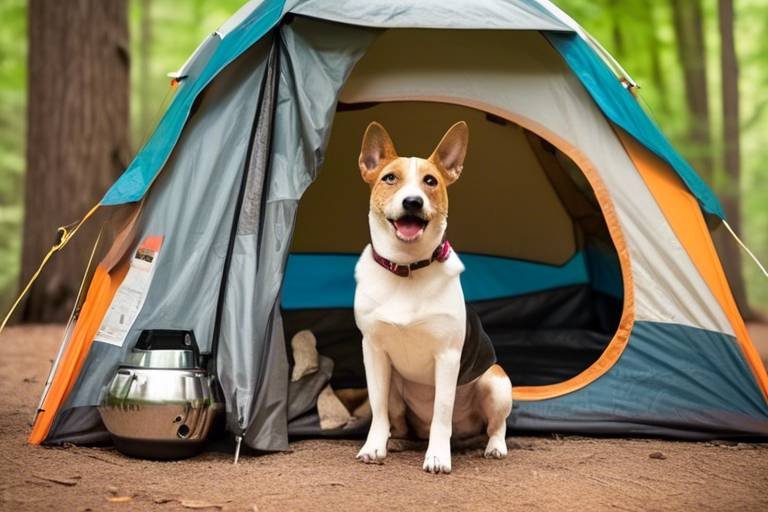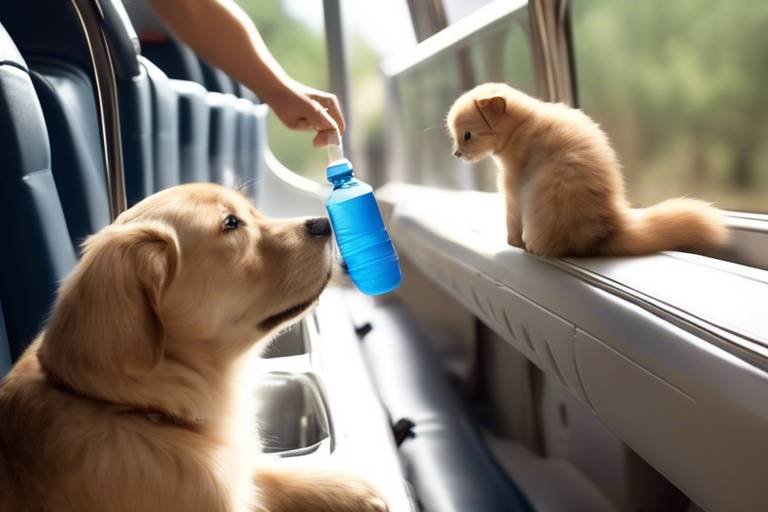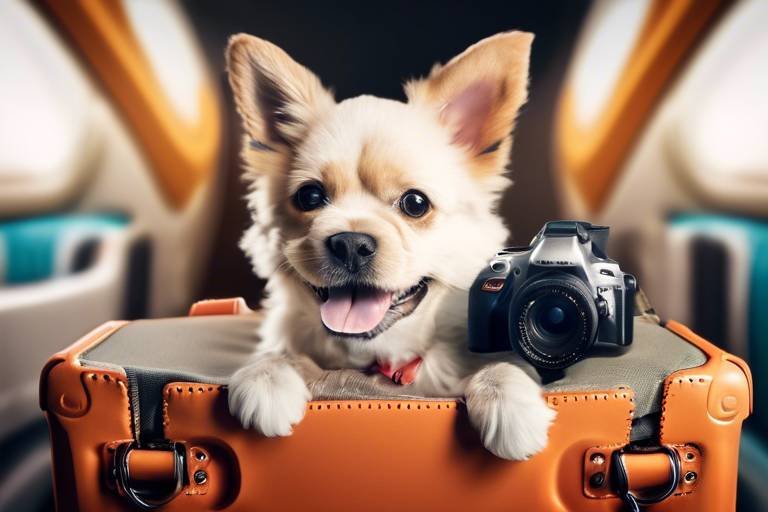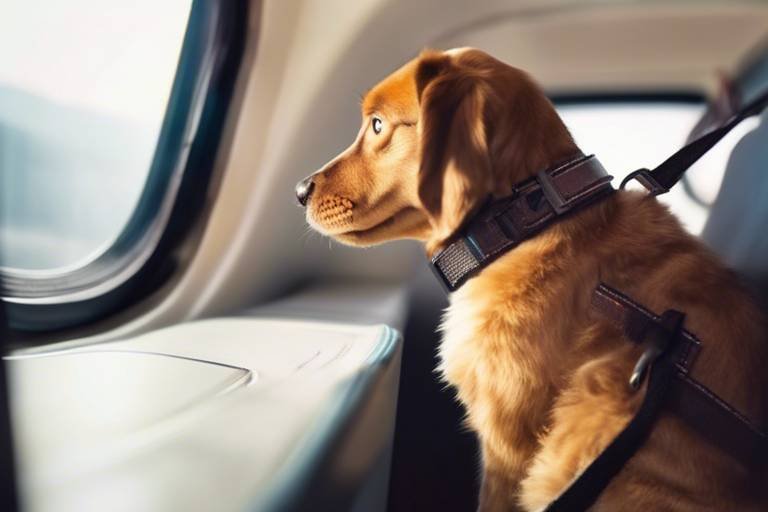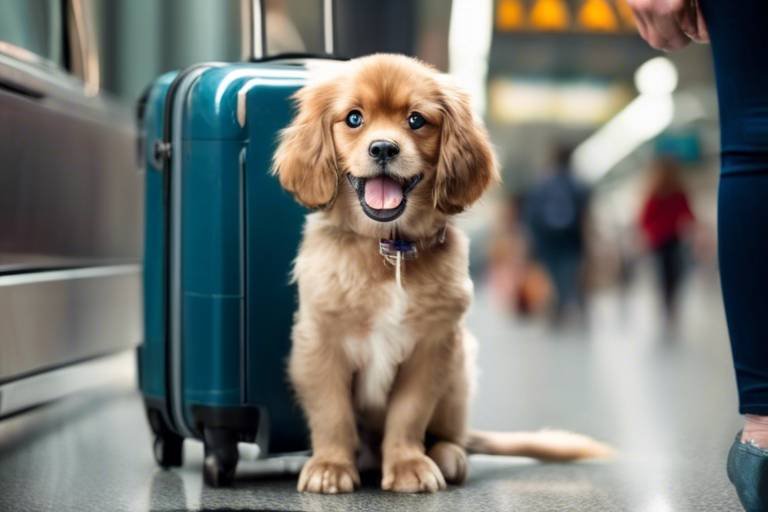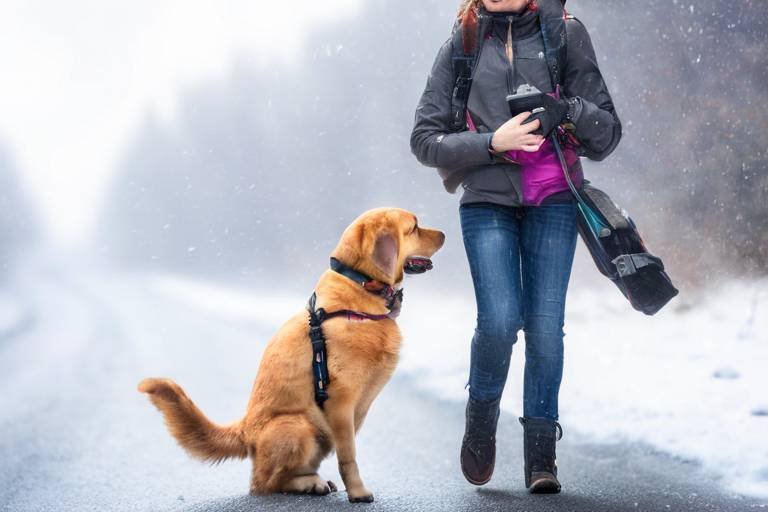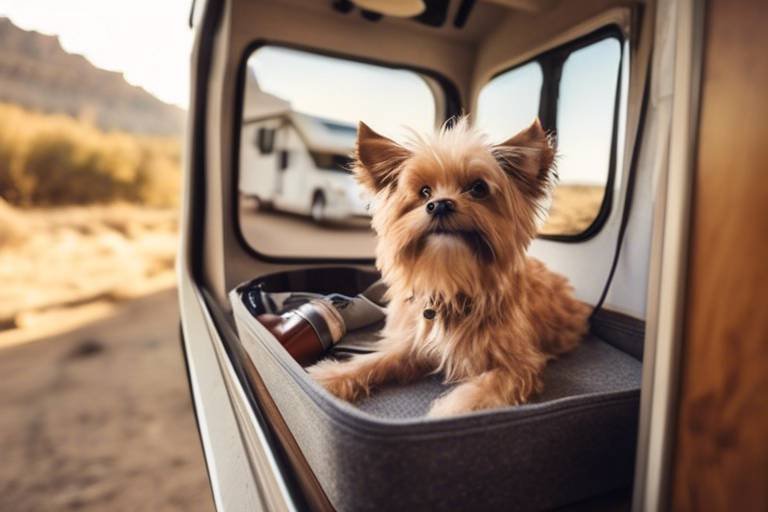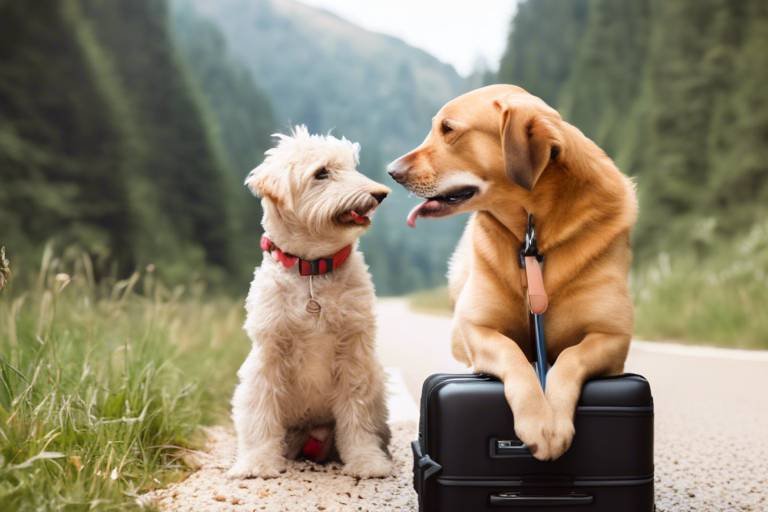Tips for Navigating Pet-Friendly Campgrounds
Camping with your furry friend can be one of the most rewarding experiences, but it requires a bit of planning and knowledge to ensure everything goes smoothly. In this guide, we’ll share essential tips for finding and enjoying pet-friendly campgrounds, ensuring that both you and your pet have a fantastic time exploring the great outdoors. Are you ready to embark on an adventure with your four-legged companion? Let's dive in!
Before you even think about packing your bags, the first step is to conduct thorough research on campgrounds that welcome pets. The internet is a treasure trove of information, with websites dedicated to listing pet-friendly camping locations. A few popular resources include:
- Camping Apps: Apps like Campendium and AllTrails often have filters for pet-friendly options.
- State Park Websites: Many state parks provide detailed information about their pet policies.
- Online Forums: Join camping forums or social media groups where fellow pet owners share their experiences and recommendations.
Keep in mind that not all campgrounds are created equal. Some may have specific areas designated for pets, while others may allow them throughout the entire campground. It’s essential to read reviews and check the campground’s website for their pet policy to avoid any surprises upon arrival.
Every campground has its own set of rules when it comes to pets, and understanding these regulations is crucial to ensure a hassle-free stay. Common regulations include leash requirements, designated pet areas, and restrictions on certain breeds. Familiarizing yourself with these rules can make your camping experience much more enjoyable. Always remember to check for any additional fees that might apply for bringing your pet along.
Most campgrounds enforce leash policies and require pet owners to clean up after their pets. Following these policies is not just about compliance; it’s about creating a safe and pleasant environment for everyone. Imagine hiking along a beautiful trail, and suddenly encountering an unleashed dog—it's not only unsettling but can also lead to accidents.
Keeping your pet on a leash is essential for their safety and the comfort of other campers. A leash helps prevent your pet from wandering off, encountering wildlife, or getting into trouble. Additionally, it shows respect for fellow campers who may not be as comfortable around pets. Think of the leash as a safety net, keeping your furry friend close while allowing them to enjoy the sights and sounds of nature.
Being responsible for your pet’s waste is crucial, not only for maintaining the beauty of the campground but also for public health. Here are some best practices for effective clean-up:
- Always carry enough waste bags with you.
- Use biodegradable bags to minimize environmental impact.
- Dispose of waste bags in designated trash receptacles.
By adhering to these practices, you contribute to a cleaner environment and set a positive example for other pet owners.
Timing can significantly affect your camping experience with pets. For instance, visiting during peak season might mean crowded campgrounds and less space for your pet to roam. Consider planning your trip during the shoulder seasons—spring and fall—when the weather is pleasant, and the crowds are thinner. Not only will this enhance your experience, but it will also provide a more relaxed atmosphere for your furry companion.
Proper preparation is key to a successful camping trip. You wouldn’t head out without your essentials, and the same goes for your pet! Make a checklist of items to pack, ensuring you have everything your furry friend needs for comfort and safety. Essential items include food, water, bowls, leashes, and a first aid kit. Don’t forget to pack some of their favorite toys and bedding to make them feel at home in the great outdoors.
When it comes to camping gear for your pet, consider the following essentials:
- Food and Water: Bring enough food for the duration of your trip, plus a little extra, just in case. A portable water bowl is also a must!
- First Aid Kit: Accidents happen, so having a pet first aid kit on hand can be a lifesaver.
- Leash and Collar: A sturdy leash and collar with ID tags are crucial for keeping your pet safe.
Creating a comfortable environment for your pet can enhance their camping experience. Items like a cozy bed or blanket can help them feel secure in unfamiliar surroundings. Bringing their favorite toys can also provide comfort and entertainment during downtime. Just like you, pets appreciate a little slice of home, even when they’re out in nature.
Camping opens up a world of fun activities for you and your pet. Whether it’s hiking on pet-friendly trails or splashing around in a nearby lake, there are countless ways to bond with your furry friend. Engaging in activities together not only strengthens your connection but also helps burn off some of that excess energy your pet might have!
Hiking is a popular activity for pet owners, but it’s vital to choose trails that are safe and suitable for pets. Look for trails that are marked as pet-friendly and consider factors like terrain and distance. Always bring plenty of water for both you and your pet, and keep an eye on their energy levels to avoid exhaustion.
If your campground is near water, take advantage of it! Swimming can be a fantastic way for your pet to cool off and have fun. However, always prioritize safety—ensure your pet is comfortable in the water and consider using a pet life jacket for added security. Activities like fetch on the beach or simply splashing around can create unforgettable memories for both of you.
Q: Can I bring my pet to any campground?
A: Not all campgrounds allow pets, so it’s essential to research and find pet-friendly options before your trip.
Q: What should I do if my pet misbehaves at the campground?
A: If your pet is acting out, it’s best to remove them from the situation and give them some time to calm down. Consider taking them for a walk or finding a quiet spot.
Q: Are there any specific breeds that are not allowed in campgrounds?
A: Some campgrounds may have restrictions on certain breeds, so always check the campground’s pet policy before making a reservation.
Q: How do I keep my pet safe while camping?
A: Always keep your pet leashed, provide plenty of water, and ensure they are protected from extreme weather conditions. A pet first aid kit is also a good idea.
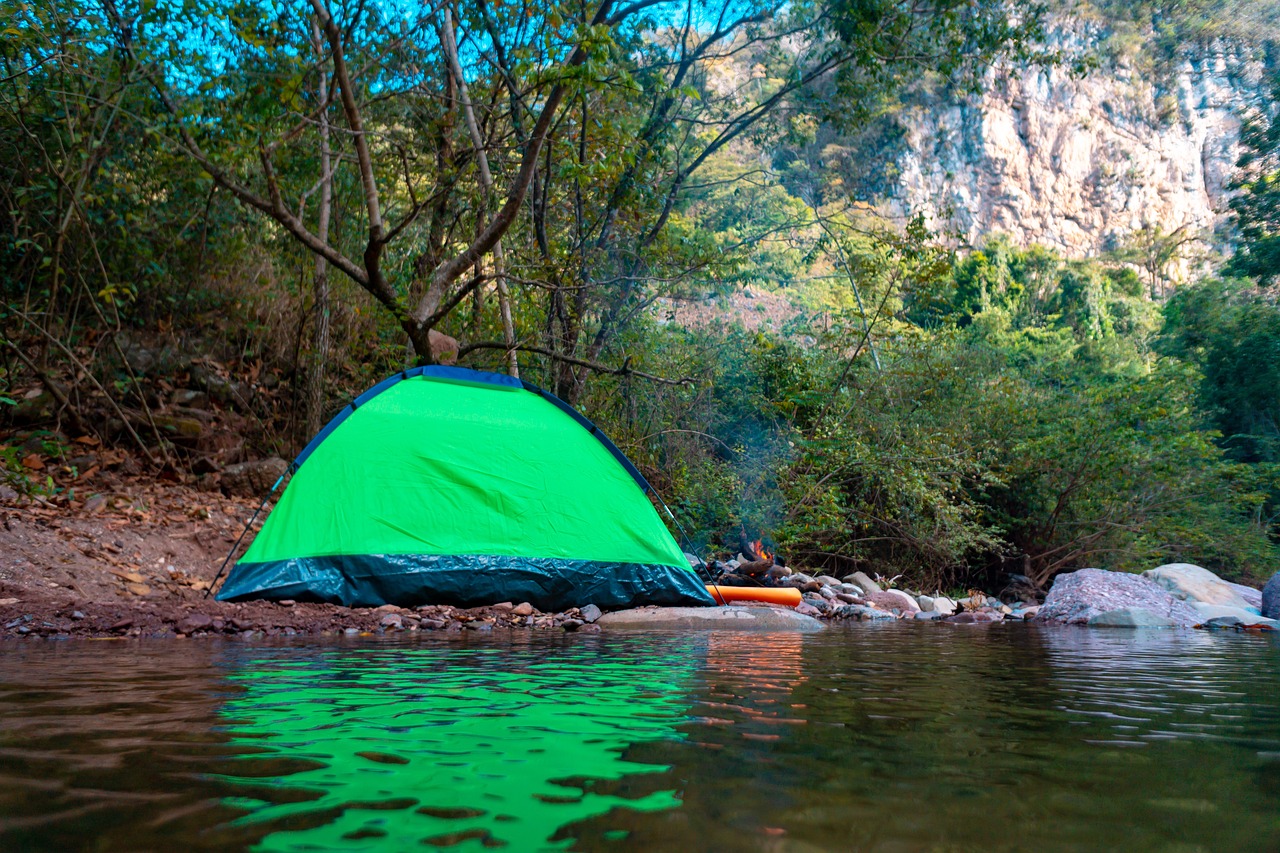
Researching Pet-Friendly Campgrounds
Before you embark on your exciting outdoor adventure, it’s essential to do your homework when it comes to finding the right pet-friendly campground. Not all campgrounds welcome furry companions, and understanding the options available can make a world of difference in your camping experience. So, where do you start? First, consider utilizing various online resources that specialize in pet-friendly travel. Websites like BringFido or PetsWelcome can be invaluable, offering user reviews and detailed information about campgrounds that allow pets.
Additionally, social media groups and forums can provide firsthand accounts from fellow pet owners. Engaging with communities on platforms like Facebook or Reddit can yield hidden gems that aren’t widely advertised. Don’t forget to check out local tourism websites and even the campground's official site for specific pet policies and amenities.
When researching, make sure to take note of the following important factors:
- Pet Policies: Check for any restrictions on the size or breed of pets allowed. Some campgrounds may have specific rules that you need to adhere to.
- Amenities: Look for campgrounds that offer pet-friendly amenities such as dog parks, walking trails, or even pet-friendly cabins.
- Nearby Attractions: Consider what activities are available nearby. Are there pet-friendly hiking trails or lakes for swimming?
Once you have a list of potential campgrounds, it’s wise to read reviews from other campers. Look for comments about the cleanliness of the grounds, the friendliness of the staff, and how well they accommodate pets. This information can provide insight into what you can expect during your stay. Remember, a little research goes a long way in ensuring that both you and your pet have a fantastic time outdoors!
In summary, finding the perfect pet-friendly campground involves a combination of online research, community engagement, and thorough review analysis. By taking these steps, you can ensure that your camping trip is enjoyable and stress-free for both you and your beloved furry friend.

Understanding Campground Rules
When it comes to having a blast at pet-friendly campgrounds, understanding the rules is just as important as packing your gear. Each campground has its own unique set of regulations regarding pets, and knowing these rules can make or break your camping experience. Imagine arriving at your destination only to find out that your furry friend isn’t allowed in certain areas or that you need to keep them leashed at all times. Not only can this lead to frustration, but it can also put your pet's safety at risk. So, before you hit the road, take a moment to familiarize yourself with the specific guidelines of the campground you plan to visit.
Most campgrounds will have their rules posted online or at the entrance, but it’s a good idea to call ahead and confirm any details. Some common regulations you might encounter include:
- Leash Requirements: Many campgrounds require pets to be on a leash no longer than six feet. This helps ensure that your pet stays safe and doesn’t wander off or disturb other campers.
- Designated Areas: Some campgrounds have specific areas where pets are allowed, such as designated trails or pet-friendly sections of the campground. Make sure to stick to these areas to avoid any conflicts.
- Noise Restrictions: If your pet tends to bark, be mindful of noise regulations. Excessive barking can disturb other campers, so it’s important to keep your furry friend calm and quiet.
- Vaccination Requirements: Certain campgrounds may require proof of vaccinations for your pet. This is especially true for campgrounds that are popular with families and children.
Understanding these rules not only shows respect for the campground and its other visitors but also ensures a safe and enjoyable experience for you and your pet. After all, the last thing you want is to be asked to leave because your pet is off-leash or causing a ruckus. So, take the time to read through the campground’s policies and ask questions if anything is unclear. This will help you avoid any surprises and allow you to focus on what really matters — making memories with your furry companion!
Most campgrounds require pets to be leashed and cleaned up after. This subsection delves into the importance of adhering to these policies for the safety and enjoyment of all campers.
Leashing your pet not only protects them but also ensures the comfort of other campers. Learn about the benefits of keeping your pet on a leash in public areas.
Being responsible for your pet's waste is crucial. This part provides tips on effective clean-up practices and the importance of maintaining a clean environment.
Timing can greatly affect your camping experience with pets. This section explores the best seasons and times to visit pet-friendly campgrounds for optimal enjoyment.
Proper preparation is key to a successful camping trip. Here, we outline essential items to pack for your pet to ensure their comfort and safety during your adventure.
From food to first aid kits, knowing what to pack is vital. This subsection lists must-have items for your pet to ensure a smooth camping experience.
Creating a comfortable environment for your pet can enhance their camping experience. This part discusses items like bedding and toys that can make a difference.
Camping offers numerous opportunities for fun with your pet. This section highlights engaging activities you can enjoy together while exploring the great outdoors.
Hiking is a popular activity for pet owners. Here, we discuss tips for selecting pet-friendly trails and ensuring a safe hiking experience for you and your furry friend.
If your campground is near water, there are plenty of fun activities for your pet. This subsection covers safety tips and enjoyable water activities to engage in with your dog.
Q: Can I take my pet to any campground?
A: Not all campgrounds allow pets. Always check the campground's pet policy before making reservations.
Q: What should I do if my pet doesn't behave well in public?
A: If your pet tends to misbehave, consider keeping them on a leash and using a muzzle if necessary. Training them before the trip can also help.
Q: Are there specific breeds that are not allowed in campgrounds?
A: Some campgrounds may have restrictions on certain breeds, especially if they are considered aggressive. Always check the campground’s rules.
Q: How can I ensure my pet stays safe while camping?
A: Keep your pet leashed, avoid leaving them unattended, and ensure they have a safe, comfortable space to relax.
Leash and Clean-Up Policies
When embarking on a camping adventure with your furry friend, understanding the of your chosen campground is paramount. Most campgrounds have specific regulations in place to ensure the safety and enjoyment of all visitors, both human and canine. These policies are not just arbitrary rules; they serve a vital purpose in maintaining a harmonious environment where everyone can relax and enjoy the beauty of nature.
First and foremost, let's talk about the leash policy. Many campgrounds require pets to be on a leash at all times. This isn't just a suggestion; it's a safety measure. Imagine you're hiking along a beautiful trail, surrounded by stunning views, and suddenly your dog spots a squirrel and takes off! A leash keeps your pet close, preventing them from wandering off into potentially dangerous situations, such as busy roads or encounters with wildlife. Moreover, a leash ensures that your pet doesn't disturb other campers who may not be as comfortable around animals. It's all about creating a peaceful camping atmosphere for everyone.
Now, onto the clean-up policies. Responsible pet ownership means being diligent about cleaning up after your pet. Most campgrounds have strict rules regarding waste disposal, and failing to comply can result in fines or being asked to leave the premises. Not only is it courteous to fellow campers, but it also helps keep the campground clean and safe for all visitors. To make this easier, consider packing a few essential items:
- Waste Bags: Always carry biodegradable waste bags to pick up after your pet.
- Shovel or Scoop: A small shovel can be handy for larger deposits.
- Disposal Locations: Familiarize yourself with where waste disposal stations are located within the campground.
By adhering to these leash and clean-up policies, you not only protect your pet but also contribute to the overall enjoyment of the campground experience for everyone involved. Remember, a little responsibility goes a long way in ensuring that pet-friendly campgrounds remain welcoming to all furry companions. So, before you head out, take a moment to review the campground's specific rules and pack accordingly. Your fellow campers will appreciate your efforts, and your pet will thank you for keeping them safe and secure!
Why Leashing is Essential
When it comes to camping with your furry friend, leashing is not just a rule; it's a vital part of ensuring a safe and enjoyable experience for everyone involved. Imagine this: you're surrounded by the breathtaking beauty of nature, the smell of pine trees wafting through the air, and your dog is off-leash, running wild. It sounds idyllic, right? But consider the potential chaos that could ensue. A leash acts as a lifeline, keeping your pet close and preventing unexpected encounters with wildlife or other campers.
Leashing your pet also helps you maintain control in unfamiliar environments. Campgrounds can be bustling with activity, from families setting up tents to children playing games. In such settings, having your dog leashed allows you to manage their behavior effectively. Not only does this protect your pet from wandering off, but it also ensures that they don’t inadvertently disturb other campers, which could lead to uncomfortable situations.
Furthermore, many campgrounds enforce leash policies for a reason. They want to create a welcoming environment for all visitors, including those who may be fearful of dogs. A sudden encounter with an unrestrained pet can be alarming for some people. By keeping your dog on a leash, you respect the comfort levels of others, fostering a sense of community and camaraderie among campers.
To illustrate the importance of leashing, consider the following points:
- Safety First: A leash prevents your pet from running into dangerous situations, such as busy roads or encounters with wild animals.
- Respect for Others: Not everyone is a dog lover. Keeping your pet leashed ensures that they don’t accidentally frighten or annoy other campers.
- Better Control: A leash gives you the ability to manage your pet's behavior, especially in crowded areas.
- Protects Wildlife: Keeping your pet leashed helps protect local wildlife, preventing your dog from chasing or disturbing animals in their natural habitat.
In conclusion, leashing your pet is essential for a smooth camping experience. It not only safeguards your dog but also enhances the enjoyment of the great outdoors for everyone. So, next time you hit the trails, remember: a leash is not just a piece of equipment; it's a tool for adventure, safety, and respect.
Q1: Are there any exceptions to leash rules at campgrounds?
A1: While most campgrounds require pets to be leashed, some may have designated off-leash areas. Always check the specific rules of the campground before your visit.
Q2: What if my dog is well-trained and responds to voice commands?
A2: Even if your dog is well-trained, it's best to keep them leashed in public areas. This ensures their safety and the comfort of other campers.
Q3: How long should the leash be?
A3: A standard leash length of 6 feet is generally recommended. This allows for control while still giving your pet some freedom to explore.
Q4: What should I do if my dog gets tangled in the leash?
A4: Stay calm and gently guide your dog to untangle them. If necessary, you may need to kneel down to help them out of the situation.
Best Practices for Clean-Up
When you're out enjoying the great outdoors with your furry companion, one of the most important responsibilities you have is to keep the environment clean. It's not just about following campground rules; it's about being a considerate camper and ensuring that nature remains beautiful for everyone. So, how can you effectively manage your pet's waste while camping? Here are some best practices to keep in mind.
First and foremost, always carry the right supplies. A well-stocked clean-up kit can make all the difference. This kit should include:
- Biodegradable poop bags: These are a must-have for any pet owner. They are environmentally friendly and break down more easily than regular plastic bags.
- Disposable gloves: Wearing gloves while picking up after your pet can help keep your hands clean and hygienic.
- Hand sanitizer: It's a good idea to have hand sanitizer on hand for a quick clean-up after you've disposed of your pet's waste.
Next, always be vigilant about where your pet does their business. Choose a spot that is away from trails, water sources, and campsites. This helps to minimize the impact on the environment and keeps the area pleasant for other campers. If you're in a more remote area, consider digging a small hole (about six inches deep) to bury the waste, but be sure to check local regulations first!
Another important aspect of clean-up is timing. Don't wait until the end of your stay to pick up after your pet. Instead, make it a habit to clean up immediately after your pet does their business. This not only keeps the area tidy but also sets a good example for other campers.
Lastly, consider educating yourself about the local wildlife. Some areas may have specific guidelines about pet waste due to the presence of certain animals. For example, in bear country, it's particularly important to keep the area clean to avoid attracting wildlife. Understanding these nuances can help you be a more responsible camper.
In summary, effective pet clean-up while camping is about preparation, vigilance, and respect for nature. By following these best practices, you not only ensure a pleasant experience for yourself but also for fellow campers and the environment. After all, a clean campsite is a happy campsite!
Q: What should I do if there are no waste disposal stations at the campground?
A: If there are no waste disposal stations, always carry your pet's waste back with you. Use biodegradable bags to minimize your environmental impact.
Q: Are there any specific rules regarding pet waste in national parks?
A: Yes, many national parks have strict regulations regarding pet waste. Always check the park's guidelines before your visit to ensure you're compliant.
Q: What if my dog refuses to go to the bathroom in public areas?
A: It can be challenging, but try taking your dog for a walk in quieter areas of the campground. Sometimes, a little privacy can help them feel more comfortable.
Q: How can I encourage my pet to use designated bathroom areas?
A: Use positive reinforcement techniques, such as treats and praise, to encourage your pet to go in the designated areas. Consistency is key!
Choosing the Right Time to Visit
Timing can significantly impact your camping experience with your furry companions. Imagine setting up your tent under a bright, warm sun, only to have your plans dashed by unexpected rain or sweltering heat. To avoid such disappointments, it’s essential to consider the seasons and weather conditions when planning your trip. Generally, the best times to visit pet-friendly campgrounds are during the spring and fall months. These seasons often offer mild temperatures, fewer crowds, and stunning natural scenery, making them perfect for outdoor adventures.
Spring is a magical time when nature comes alive. The flowers bloom, and the air is filled with delightful scents. This season is ideal for hiking, as the trails are usually less crowded, allowing you and your pet to explore at your own pace. Just be cautious of the occasional spring shower; a little rain can be fun, but it’s wise to check the forecast before you head out. On the other hand, fall brings a beautiful tapestry of colors as leaves change, creating a picturesque backdrop for your camping trip. The cooler temperatures also mean your pet will be more comfortable during hikes and outdoor activities.
However, summer can be a mixed bag. While it’s a popular time for camping, the heat can be challenging for pets, especially breeds that are sensitive to high temperatures. If you choose to camp in the summer, aim for early mornings or late afternoons when it's cooler. Additionally, be sure to provide plenty of water and shade for your pet. If your campground is near water, consider planning some fun water activities to help keep your pet cool.
Winter camping can be an exhilarating adventure, but it requires extra preparation. Not all pets are suited for cold weather, so ensure your furry friend can handle the chill. If you decide to brave the winter wonderland, consider the following:
- Check the campground’s winter policies: Not all campgrounds allow pets during winter months.
- Pack appropriate gear: Ensure your pet has a warm coat and booties to protect their paws from ice and snow.
- Monitor your pet’s comfort: Keep an eye on your pet for signs of cold stress.
Ultimately, the right time to visit pet-friendly campgrounds depends on your and your pet's preferences. Always consider your pet's health and comfort when planning your trip. By choosing the right season and being mindful of weather conditions, you can create unforgettable memories with your furry friend in the great outdoors.
Q: What is the best season for camping with pets?
A: Spring and fall are generally the best seasons for camping with pets due to mild temperatures and fewer crowds.
Q: Can I take my pet camping in the summer?
A: Yes, but it's essential to consider the heat. Plan activities for cooler parts of the day and ensure your pet has plenty of water and shade.
Q: Are there special considerations for winter camping with pets?
A: Yes, ensure your pet is suited for cold weather, check campground policies, and pack appropriate gear to keep them warm.
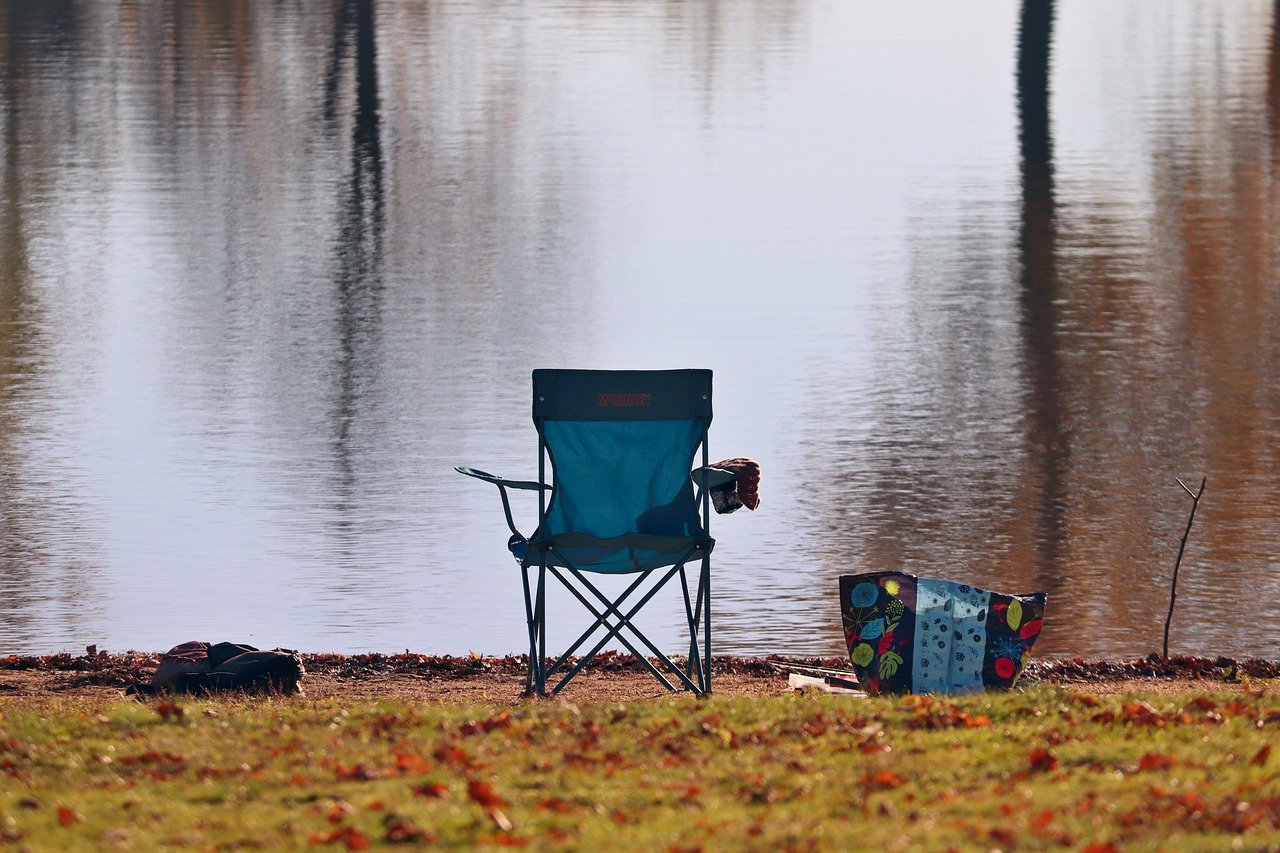
Packing for Your Pet
When it comes to camping with your furry friend, proper preparation is the name of the game. You wouldn't head out on an adventure without your essentials, right? The same goes for your pet! Packing for your pet is not just about throwing a few items into a bag; it’s about ensuring their comfort, safety, and happiness throughout your trip. Think of it like packing a mini home for your pet, where they can feel secure and relaxed even in the great outdoors.
First things first, you need to consider the essentials. These are the items that will keep your pet fed, hydrated, and healthy. Make sure to bring enough food for the duration of your trip, plus a little extra just in case. A portable food and water bowl is a must-have, as hydration is crucial, especially during outdoor activities. Don’t forget a leash and collar with identification tags! If your pet is prone to wandering off, having a leash will keep them safe and close by.
Next up, let's talk about health and safety. Just like you would pack a first aid kit for yourself, your pet needs one too! Include items such as bandages, antiseptic wipes, and any medications your pet might need. You can create a simple pet first aid kit by using a small, waterproof container. This will ensure you have everything you need at your fingertips in case of an emergency. Additionally, if your pet is on any special diet or needs specific care, be sure to bring those items along as well.
Now, let’s not forget about comfort! Your pet deserves to feel cozy while camping, just like you do. Bring along their favorite blanket or bed to provide a familiar resting spot. If your pet loves to play, consider packing a few toys to keep them entertained. Toys can also serve as a great distraction if your pet feels anxious in a new environment. Remember, a happy pet makes for a happy camping experience!
Lastly, it’s a good idea to prepare for the weather conditions you might encounter. If you're heading to a cooler area, a pet jacket or sweater might be necessary to keep them warm at night. Conversely, if the forecast predicts warm weather, a cooling vest can help your pet stay comfortable. Always be prepared for the unexpected, as nature can be unpredictable!
To summarize, here’s a quick checklist of what to pack for your pet:
- Food and water (plus bowls)
- Leash and collar with ID tags
- First aid kit
- Comfort items (bed, blanket)
- Favorite toys
- Weather-appropriate clothing
By packing these essential items, you’re setting the stage for an unforgettable camping experience with your beloved pet. Remember, the goal is to create an environment where both you and your furry companion can enjoy the beauty of nature together, making memories that will last a lifetime!
Q1: What should I bring for my pet when camping?
A: Essential items include food, water, a leash, a first aid kit, comfort items like a bed or blanket, and toys to keep them entertained.
Q2: Are there any special considerations for camping with older pets?
A: Yes, older pets may require more attention. Ensure they have a comfortable place to rest, keep their medications handy, and monitor their activity levels to avoid overexertion.
Q3: Can I take my pet swimming at the campground?
A: Many campgrounds near water allow pets to swim, but it's important to check the specific rules and ensure your pet is comfortable and safe in the water.
Q4: How can I keep my pet safe while camping?
A: Always keep your pet on a leash, ensure they have proper identification, provide plenty of water, and be mindful of their surroundings to prevent any accidents.
Essential Gear and Supplies
When it comes to camping with your furry friend, packing the right gear and supplies is absolutely essential for a smooth and enjoyable experience. Imagine setting up your campsite, only to realize you forgot your pet's food or their favorite toy! To avoid such mishaps, it's wise to create a checklist before you hit the road. Start with the basics: food and water. Make sure to pack enough food to last the entire trip, plus a little extra just in case. Don't forget a portable water bowl and plenty of fresh water, especially if you’re heading to a remote area where water sources may be limited.
In addition to food and water, consider bringing a first aid kit specifically designed for pets. Accidents can happen, and having the right supplies on hand can make all the difference. Your kit should include items such as antiseptic wipes, bandages, and any medications your pet may need. It's also a good idea to have a copy of your pet's medical records, just in case you need to visit a vet during your trip.
Another must-have is a sturdy leash and collar. A durable leash will not only keep your pet safe but also give you peace of mind while exploring the great outdoors. Look for a leash that is comfortable to hold and long enough to allow your pet some freedom to roam without straying too far. Additionally, a collar with an ID tag is crucial. If your pet gets lost, having your contact information readily available can help reunite you quickly.
Comfort is key when camping, so don’t forget to pack your pet's favorite bedding or blanket. This familiar item can help them feel more at home in the great outdoors. You might also want to bring along a couple of their favorite toys to keep them entertained while you relax by the campfire. A chew toy or a ball can provide hours of enjoyment and help relieve any anxiety your pet might feel in a new environment.
Lastly, consider bringing a portable pet crate or a pet-friendly tent. A crate can provide a safe space for your pet when you’re busy setting up camp or cooking. If your pet is crate-trained, this can be especially beneficial. If you’re camping in a tent, make sure it has enough space for both you and your pet to move around comfortably. Remember, a happy pet makes for a happy camping trip!
In summary, preparing the right gear and supplies for your pet can enhance your camping experience significantly. By ensuring you have everything from food and water to comfort items and safety gear, you’ll be well on your way to creating unforgettable memories with your furry companion in the great outdoors.
- What should I pack for my pet on a camping trip? It's essential to pack food, water, a leash, a collar with ID tags, a first aid kit, comfort items like bedding and toys, and a portable crate if needed.
- Are all campgrounds pet-friendly? No, not all campgrounds allow pets. It's important to research and choose campgrounds that specifically welcome pets.
- What if my pet gets lost while camping? Always ensure your pet has an ID tag with your contact information. It's also advisable to have a recent photo of your pet to help in case they get lost.
- Can I take my pet hiking with me? Yes, many trails are pet-friendly, but make sure to check the regulations and choose trails that are suitable for your pet's abilities.
Comfort Items for Your Pet
When embarking on a camping adventure, ensuring your pet's comfort is just as important as your own. After all, happy pets make for happy campers! Imagine your furry friend snuggled up in their cozy bed after a long day of exploration, tail wagging in delight. To create that perfect camping environment, there are several essential comfort items you should consider packing.
First and foremost, a comfortable pet bed is a must. Camping can be exhausting, and your pet deserves a soft spot to rest. Look for a portable bed that is easy to pack and provides adequate support. If your pet is used to sleeping in a specific type of bed at home, consider bringing it along to help them feel more at ease in the unfamiliar environment.
In addition to a bed, don't forget about your pet's favorite blanket. This familiar item can provide a sense of security and comfort, especially when sleeping in a new location. You can use it to cover their bed or even wrap them up during cooler nights by the campfire. Speaking of warmth, if you're camping in a cooler climate, a doggy jacket or sweater can help keep your pet cozy and protected from the elements.
Another important aspect of camping is hydration. Make sure to bring a portable water bowl that’s easy to fill and clean. Keeping your pet hydrated is crucial, especially on warm days when they’re active. Some water bowls even have built-in features to prevent spills, making them ideal for the rugged outdoors.
For those pets that thrive on play, packing a few toys can keep them entertained during downtime. Consider bringing a mix of their favorites, such as a chew toy, a ball, or even a frisbee. These items not only provide entertainment but also serve as a great way to bond with your pet. Engaging in playtime can help burn off some of that excess energy, making for a more relaxed evening.
Lastly, don’t overlook the importance of first aid supplies. While it might not seem like a comfort item, having a well-stocked pet first aid kit can provide peace of mind. Include items like bandages, antiseptic wipes, and any medications your pet may need. Knowing you’re prepared for any minor mishaps can make your camping experience much more enjoyable.
In summary, ensuring your pet's comfort while camping is all about bringing familiar and supportive items. From cozy beds to hydration solutions and playthings, these essentials will help create a positive camping experience for both you and your furry friend. So, as you pack your bags for your next outdoor adventure, remember that a little preparation goes a long way in keeping your pet happy and comfortable!
- What should I pack for my pet when camping? It's essential to bring a comfortable bed, favorite toys, a portable water bowl, and a first aid kit for your pet to ensure their comfort and safety.
- Can I bring my pet to any campground? Not all campgrounds allow pets, so it's crucial to research pet-friendly campgrounds before your trip.
- How do I keep my pet safe while camping? Always keep your pet leashed, ensure they are up to date on vaccinations, and monitor them closely around wildlife.
- Are there specific rules for pets at campgrounds? Yes, most campgrounds have rules regarding leash requirements and clean-up policies. Familiarize yourself with these before your visit.
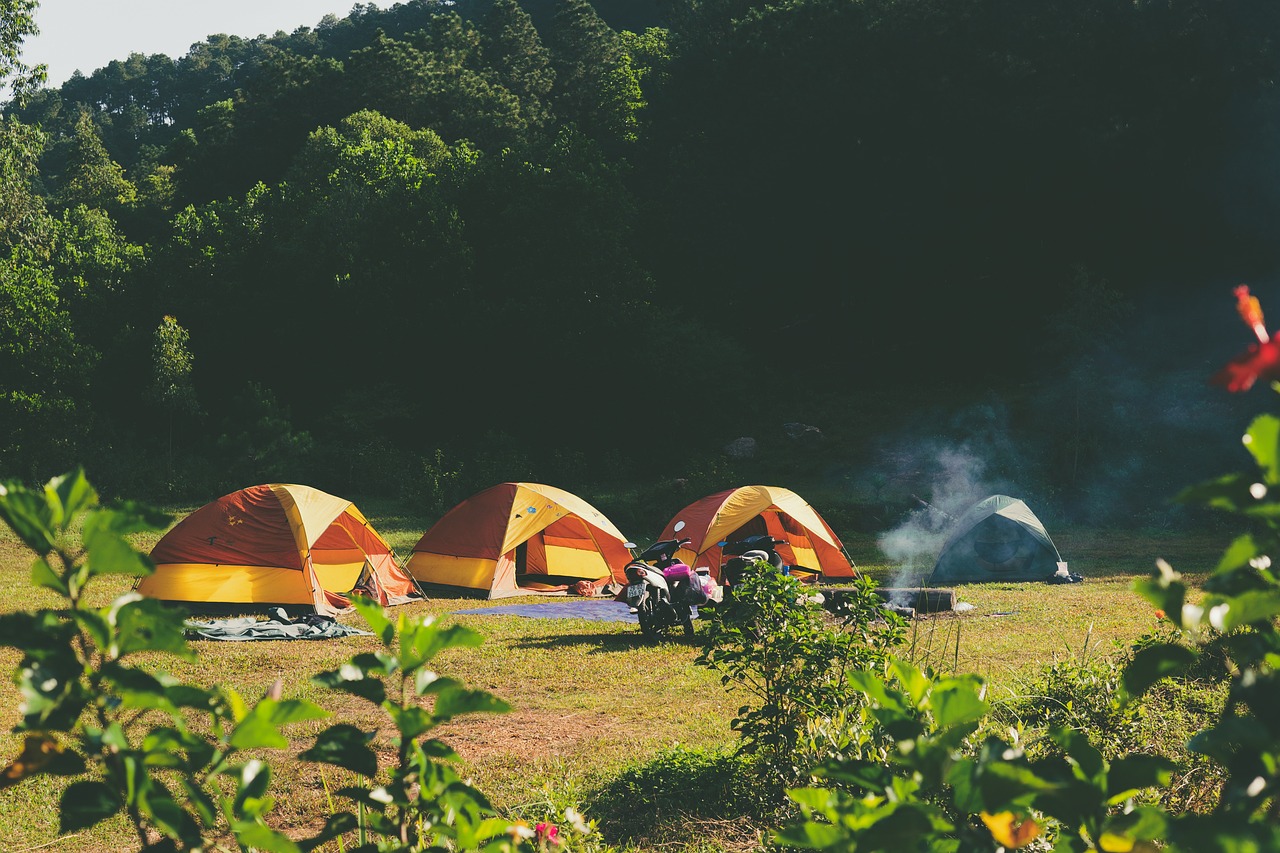
Activities to Enjoy Together
Camping is not just about setting up a tent and roasting marshmallows; it’s an opportunity to create unforgettable memories with your furry friend. Imagine the joy of exploring the great outdoors together, where every rustle in the bushes might be a new adventure waiting to unfold. Engaging in activities with your pet can enhance your camping experience, making it not just about relaxation, but also about bonding and fun. So, what can you do to ensure both you and your pet have the time of your lives? Let’s dive into some exciting activities that will make your camping trip truly special!
One of the most popular activities for pet owners is hiking. There’s something magical about hitting the trails with your dog by your side. The fresh air, the scenic views, and the thrill of discovery can be invigorating for both of you. However, it’s crucial to choose pet-friendly trails that are suitable for your dog’s fitness level. Before you head out, check the trail’s regulations regarding pets, and always keep your dog leashed to ensure their safety and the comfort of other hikers. Remember, a well-exercised dog is a happy dog, and hiking can provide the perfect outlet for their energy.
If you’re lucky enough to camp near a body of water, take advantage of it! Water activities can be a fantastic way to cool off and have fun. Whether it’s swimming, paddleboarding, or just splashing around, dogs often love the water. However, safety is paramount. Always keep a close eye on your pet, especially if they’re not accustomed to swimming. Consider investing in a dog life jacket for added safety, and make sure to rinse your dog off after water play to remove any harmful chemicals or salt. Engaging in water activities not only keeps your pet active but also strengthens your bond as you navigate through fun experiences together.
For those cozy evenings around the campfire, why not include your pet in the fun? Bring along some pet-friendly treats and snacks, and enjoy a night of stargazing while your dog enjoys their special goodies. You can also play games like fetch or tug-of-war, which can be a great way to burn off some extra energy before bedtime. Just be sure to keep any food items that aren’t safe for pets out of reach, as some human foods can be harmful.
In addition to these activities, consider creating a pet-friendly itinerary that includes visits to local attractions or parks that welcome pets. Many campgrounds offer organized events like dog shows, agility courses, or even pet yoga sessions. Participating in these activities can be a fun way to meet other pet owners and share experiences. Plus, it gives your pet a chance to socialize and play with other dogs, which is always a bonus!
Finally, don’t forget to take plenty of pictures during your adventures. Capturing those moments will not only make for great memories but will also allow you to share your experiences with other pet lovers. Who knows? Your camping trip could inspire someone else to embark on their own adventure with their furry companion!
Q: Can I take my pet to any campground?
A: Not all campgrounds are pet-friendly. It's essential to research and find campgrounds that specifically allow pets before making a reservation.
Q: What should I do if my pet gets lost while camping?
A: Always ensure your pet has a collar with an ID tag. It's also a good idea to have a recent photo of your pet on hand. If they get lost, start by searching the immediate area, and ask other campers for help.
Q: Are there any specific items I should pack for my pet?
A: Yes! Some essentials include food, water, a leash, waste bags, a first aid kit, and comfort items like bedding and toys.
Q: How can I keep my pet safe during camping activities?
A: Always supervise your pet, keep them leashed in public areas, and ensure they are up-to-date on vaccinations. Also, be mindful of the weather and provide plenty of water and shade.
Hiking with Your Pet
Hiking with your pet can be one of the most rewarding experiences you share together. Imagine the fresh air, the rustling leaves, and the sound of your furry friend happily trotting alongside you! However, before you hit the trails, there are a few key considerations to ensure a safe and enjoyable adventure for both you and your pet.
First and foremost, choosing the right trail is crucial. Not all hiking paths are created equal, and some may be more suitable for pets than others. Look for trails that are pet-friendly and check for any specific regulations regarding pets. Websites, local parks, and hiking apps often provide valuable information about which trails welcome four-legged hikers. Remember, a well-marked trail with a moderate difficulty level is ideal for most pets, especially if they’re not used to long hikes.
Once you’ve selected a trail, it’s time to prepare for the hike. Make sure to pack plenty of water for both you and your pet, as staying hydrated is essential. A collapsible water bowl is a great investment, allowing you to easily quench your pet’s thirst on the go. Additionally, consider bringing some snacks or treats to keep their energy levels up during the hike. Just like you wouldn’t want to hike on an empty stomach, your pet deserves a little boost too!
Safety is another important aspect of hiking with your pet. Always keep your dog on a leash, especially in areas where wildlife may be present. This not only protects your pet but also helps to maintain a peaceful environment for other hikers. If you have a particularly active or curious dog, a harness might be a better option than a collar, providing more control and comfort.
As you hike, pay attention to your pet’s behavior. If they seem tired or are panting heavily, it’s time for a break. Find a shaded area to rest and allow them to cool down. Additionally, be mindful of the terrain. Some trails can be rocky or steep, so keep an eye on your pet’s paws to avoid injuries. If you notice any signs of discomfort, it’s best to turn back and save the adventure for another day.
Finally, don’t forget to take plenty of breaks to enjoy the scenery! Hiking isn’t just about the destination; it’s about the journey. Stop to take photos, explore new spots, and let your pet enjoy the sights and smells of the great outdoors. After all, this is a shared experience, and your pet will appreciate the time spent together just as much as you do.
Q: Can I take my pet on any hiking trail?
A: Not all trails are pet-friendly. Always check the specific regulations for the trail you plan to hike.
Q: What should I do if my pet gets tired during the hike?
A: Take breaks in shaded areas, provide water, and consider carrying them if they are too tired to continue.
Q: Are there any specific supplies I should bring for my pet?
A: Yes! Bring water, snacks, a first aid kit, a leash, and waste bags to clean up after your pet.
Water Activities for Pets
When it comes to camping with your furry friend, water activities can turn an ordinary trip into a memorable adventure! Imagine your dog splashing around in a crystal-clear lake, tail wagging with pure joy. However, before you dive into fun, it’s essential to consider safety and preparation to ensure both you and your pet have a fantastic time. So, what are some exciting water activities you can enjoy together? Let’s explore!
First up, swimming is a classic favorite. Many dogs are natural swimmers, and a refreshing dip can be a great way for them to cool off during warm days. Before you head to the water, make sure to check if the area is safe for pets. Look for signs indicating pet-friendly zones, and always supervise your dog while they’re in the water. If your pup is new to swimming, consider using a doggy life jacket for added safety. Even the best swimmers can tire out quickly!
Another thrilling option is playing fetch in the water. Bring along a floating toy, like a frisbee or a rubber ball, and watch your dog delight in retrieving it from the water. This activity not only provides physical exercise but also strengthens the bond between you and your pet as you both enjoy the thrill of the chase. Just remember to choose toys that are designed for water play, as they are more durable and easier for your pet to retrieve.
If you’re near a river or stream, consider letting your dog wade in the shallow areas. Many dogs love to splash around and chase after small fish or rocks. However, always be mindful of the current; some rivers can have strong flows that may be dangerous for your pet. It’s best to keep your dog in areas where you can easily control their movement and ensure they’re safe.
Lastly, don’t forget about hydration! While your pet is having the time of their life, they can easily become dehydrated, especially if they’re active in the sun. Make sure to bring plenty of fresh water for your pet and encourage them to drink regularly. A collapsible water bowl can be a handy item to pack, making it easy to keep your pet hydrated on the go.
To summarize, water activities can significantly enhance your camping experience with your pet. Here’s a quick recap of some engaging options:
- Swimming: Ensure safety with supervision and a life jacket.
- Fetch in Water: Use floating toys for a fun retrieval game.
- Wading in Streams: Keep an eye on currents to ensure safety.
- Hydration: Always provide fresh water and encourage regular drinking.
By incorporating these water activities into your camping trip, you’ll create lasting memories and ensure your pet enjoys the great outdoors just as much as you do!
Q: Can all dogs swim?
A: Not all dogs are natural swimmers. Some breeds, like Bulldogs, may struggle in the water. Always supervise your pet and consider using a life jacket if they are not confident swimmers.
Q: How can I tell if my dog is enjoying the water?
A: Look for signs of excitement, such as wagging tails, playful behavior, and eagerness to enter the water. If your dog seems hesitant or anxious, it may be best to keep them on dry land.
Q: What should I do if my dog gets tired while swimming?
A: If your dog shows signs of fatigue, such as heavy panting or struggling, calmly guide them back to shore. Allow them to rest and hydrate before continuing any activities.
Q: Are there any specific water safety tips I should follow?
A: Always supervise your dog near water, avoid strong currents, and ensure they are well-hydrated. Also, be cautious of water temperatures, as cold water can be a shock to your pet.
Frequently Asked Questions
- What should I consider when choosing a pet-friendly campground?
When selecting a campground that welcomes pets, consider the amenities they offer, such as pet-friendly trails, water access, and nearby activities. Additionally, check if they have specific rules regarding pets, such as leash requirements and designated pet areas. It's also a good idea to read reviews from other pet owners to gauge their experiences.
- Are there specific rules I need to follow for my pet at campgrounds?
Yes! Most campgrounds have rules like keeping your pet on a leash, cleaning up after them, and ensuring they don't disturb other campers. Familiarizing yourself with these regulations before your trip can help avoid any surprises and ensure a pleasant stay for everyone.
- What essential items should I pack for my pet?
When packing for your furry friend, don’t forget the basics like food, water, bowls, and a leash. It’s also wise to bring a first aid kit, waste bags, a comfortable bed or blanket, and their favorite toys to keep them entertained. These items will help ensure your pet is comfortable and happy during your camping adventure.
- Can I take my pet hiking with me?
Absolutely! Hiking is a fantastic way to bond with your pet. Just make sure to choose trails that are pet-friendly and check for any specific rules regarding pets. Always keep your pet leashed, and be mindful of their stamina and hydration during the hike.
- What activities can I do with my pet at the campground?
There are plenty of activities to enjoy with your pet, such as hiking, swimming, and playing fetch. If your campground has a lake or river, consider introducing your pet to water activities, but always prioritize safety and supervise them closely.
- How can I ensure my pet is safe while camping?
To keep your pet safe while camping, always supervise them, especially near water or wildlife. Make sure their vaccinations are up to date, and consider bringing a pet first aid kit. It’s also a good idea to have your pet microchipped or wear a collar with ID tags in case they get lost.

